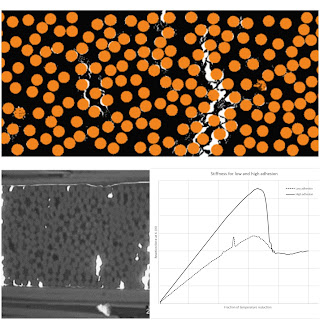The German Aerospace Center (DLR) has selected MultiMechanics, a developer of multiscale modeling and simulation software for advanced materials, to perform advanced crack prediction during the manufacturing of ceramic matrix composite (CMC) components.
The simulation group at DLR’s Institute of Structures and Design in Stuttgart has begun to model the process of pyrolysis, an intermediate step in production of ceramic matrix composites. Within this process, carbon fiber reinforced polymers (CFRP) are heated to temperatures up to 1,600 degrees Celsius and then cooled down. The team wants to understand how temperature change would affect the material’s microstructure and consequently the material behavior. This analysis is crucial for future CMC components produced by DLR, including nozzles for rockets and thermal protection systems for re-entry vehicles amongst other applications.
Neraj Jain, Group Leader in Simulation and Engineering at the Department of Ceramic Composites and Structures at DLR, states:
“MultiMech allows us to model microstructural cracks and determine how they would affect the overall composite part. Thanks to it, we can actually see where a crack is developing, how the crack will change our material, and how it will affect the final microstructure of the material.”
Using MultiMech, the engineers can vary the interface strength between fiber and ceramic matrix and evaluate how this parameter would influence crack initiation and propagation. This insight enables them to optimize the material and tailor it according to microstructural mechanics - a crucial step to more accurately understanding how a part will behave as a whole.
Dr. Flavio Souza, President & CTO of MultiMechanics, stated:“DLR is a global leader in aeronautics and space research and we are extremely proud to support their advancement in understanding and designing CMC parts. Our work at MultiMechanics for the last ten years has been dedicated to accurately connecting microstructural behavior of advanced materials to the overall part performance and its manufacturing, and we are pleased to see that our users are seeing the benefits and high value of TRUE multiscale modeling.”
Jain stated:
“MultiMech’s efficient integration with our other FEA tools like Abaqus and Ansys increases our productivity and brings us closer to our aim to optimize CMC material virtually. The way we are able to conduct crack modeling and multiscale simulation holds lots of opportunities in many projects to come.
Source:WWW.MULTIMECHANICS.COM





No comments:
Post a Comment